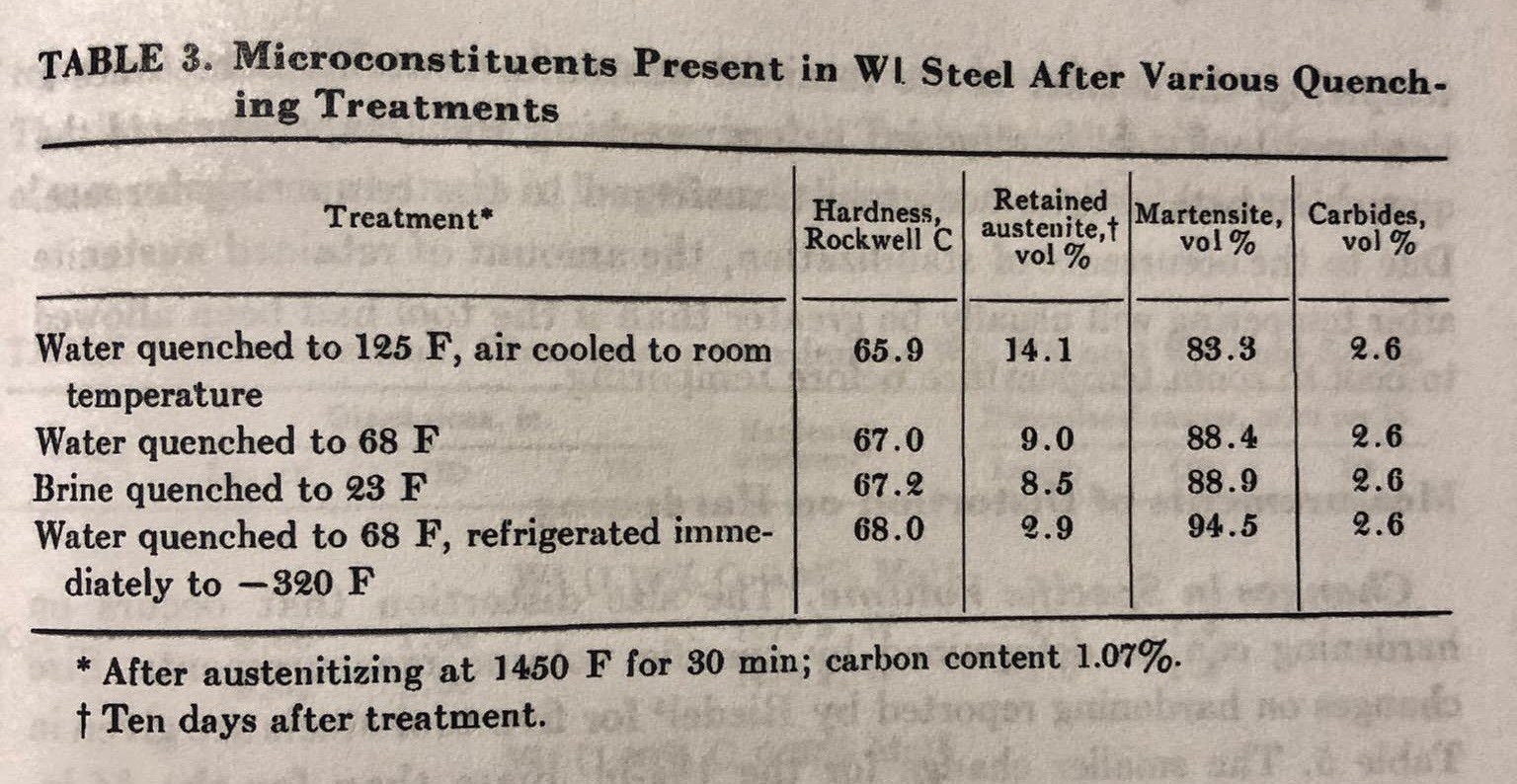- Joined
- May 30, 2020
- Messages
- 15
Greetings BF!
I just want to start out by saying that I’m not new to making knives or heat treating them. I’ve been a lurker for a long time, and have benefited greatly from the advise and information on here.
Anyway, I had a question that popped in my mind. I work pretty much exclusively with W1 tool steel and 1095 (hey, I like the stuff). Also, I love water/brine quenching. I don’t like really like oils; smelly, messy, and possible fires are things I could do without.
Now, for the steels I work with, brine is amazing because of the time you have to beat the pearlite nose. Now I understand that MartensiteStart is around 450-500F range, and MartensiteFinish is around 250F (ballpark).
I always interrupt my quenches to avoid cracks, but sometimes it gets a bit tricky when I get below 500F. So my question was...
Hypothetical quench:
-Austenize at 1450-1475 for 5 mins
-Into the brine for a second (to beat the nose) This will get you to below 900F.
-Pull the blade out wait a few seconds, and then plunge into the brine once more for 1-1.5 sec (to get to Ms temp).
-Blade should be about 450F now.
The big question is, once you hit Ms, does the speed you hit Mf matter? Do you have a certain amount of time for martensite to form?
My wild theory is that you could do two plunges into brine and let the blade air cool to Mf. If this is possible, you’d have a fully hardened blade without the unnecessary stresses that are often associated with water/brine.
I’ve tried to look for a question like this, and never really found one, so I just had to ask myself
Thank you all that read this, and a reply would be greatly appreciated.
Thank You!
I just want to start out by saying that I’m not new to making knives or heat treating them. I’ve been a lurker for a long time, and have benefited greatly from the advise and information on here.
Anyway, I had a question that popped in my mind. I work pretty much exclusively with W1 tool steel and 1095 (hey, I like the stuff). Also, I love water/brine quenching. I don’t like really like oils; smelly, messy, and possible fires are things I could do without.
Now, for the steels I work with, brine is amazing because of the time you have to beat the pearlite nose. Now I understand that MartensiteStart is around 450-500F range, and MartensiteFinish is around 250F (ballpark).
I always interrupt my quenches to avoid cracks, but sometimes it gets a bit tricky when I get below 500F. So my question was...
Hypothetical quench:
-Austenize at 1450-1475 for 5 mins
-Into the brine for a second (to beat the nose) This will get you to below 900F.
-Pull the blade out wait a few seconds, and then plunge into the brine once more for 1-1.5 sec (to get to Ms temp).
-Blade should be about 450F now.
The big question is, once you hit Ms, does the speed you hit Mf matter? Do you have a certain amount of time for martensite to form?
My wild theory is that you could do two plunges into brine and let the blade air cool to Mf. If this is possible, you’d have a fully hardened blade without the unnecessary stresses that are often associated with water/brine.
I’ve tried to look for a question like this, and never really found one, so I just had to ask myself
Thank you all that read this, and a reply would be greatly appreciated.
Thank You!
Last edited:


